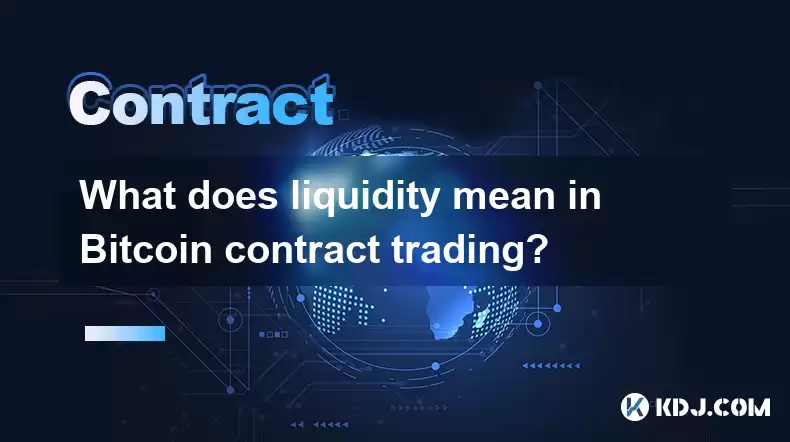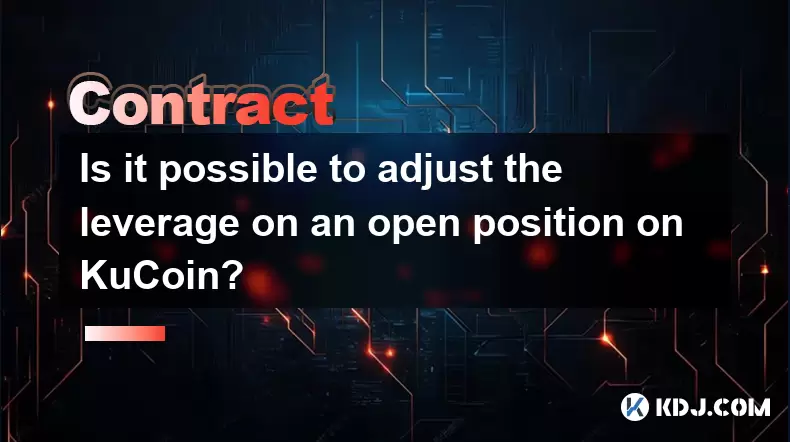-
 Bitcoin
Bitcoin $116900
0.00% -
 Ethereum
Ethereum $4280
5.48% -
 XRP
XRP $3.265
-1.45% -
 Tether USDt
Tether USDt $1.000
-0.01% -
 BNB
BNB $807.0
1.41% -
 Solana
Solana $183.1
2.93% -
 USDC
USDC $0.9999
0.00% -
 Dogecoin
Dogecoin $0.2440
6.50% -
 TRON
TRON $0.3357
-0.88% -
 Cardano
Cardano $0.8178
2.63% -
 Hyperliquid
Hyperliquid $44.13
7.45% -
 Chainlink
Chainlink $21.39
9.09% -
 Stellar
Stellar $0.4524
-0.84% -
 Sui
Sui $3.957
2.13% -
 Bitcoin Cash
Bitcoin Cash $572.7
-2.54% -
 Hedera
Hedera $0.2671
1.54% -
 Avalanche
Avalanche $24.77
4.17% -
 Ethena USDe
Ethena USDe $1.001
0.02% -
 Litecoin
Litecoin $122.3
-1.94% -
 Toncoin
Toncoin $3.432
2.26% -
 UNUS SED LEO
UNUS SED LEO $9.007
0.49% -
 Shiba Inu
Shiba Inu $0.00001396
5.26% -
 Uniswap
Uniswap $11.09
1.64% -
 Polkadot
Polkadot $4.155
4.57% -
 Dai
Dai $1.000
0.00% -
 Pepe
Pepe $0.00001253
5.11% -
 Cronos
Cronos $0.1588
2.67% -
 Bitget Token
Bitget Token $4.512
0.05% -
 Monero
Monero $275.0
0.64% -
 Ethena
Ethena $0.7527
15.10%
What does liquidity mean in Bitcoin contract trading?
High liquidity in Bitcoin contract trading ensures quick order execution at the current market price, minimizing price slippage and risk; low liquidity increases the chance of significant price discrepancies and potential losses.
Feb 27, 2025 at 08:19 pm

What Does Liquidity Mean in Bitcoin Contract Trading?
Key Points:
- Liquidity's Core Meaning: Liquidity in Bitcoin contract trading refers to the ease with which a trader can buy or sell a Bitcoin contract without significantly impacting its price. High liquidity means orders are filled quickly at the current market price, while low liquidity implies difficulty in executing trades without causing price slippage.
- Impact of Liquidity on Price: High liquidity generally translates to tighter bid-ask spreads (the difference between the highest buy and lowest sell orders), leading to more efficient price discovery. Low liquidity, conversely, widens spreads and increases the risk of price manipulation.
- Liquidity Providers' Role: Market makers and liquidity providers play a crucial role in maintaining liquidity. They continuously quote bid and ask prices, providing a readily available pool of buy and sell orders. Their actions directly influence the depth and breadth of the order book.
- Measuring Liquidity: Several metrics assess liquidity, including order book depth (the number of buy and sell orders at various price levels), order book width (the spread between best bid and best ask prices), and trading volume (the total number of contracts traded over a specific period).
- Liquidity's Relationship to Risk: Trading in illiquid markets significantly increases risk due to the potential for price slippage and difficulty in exiting positions. High liquidity, therefore, is generally preferred by traders seeking to minimize risk.
- Factors Affecting Liquidity: Various factors influence liquidity, including market volatility, trading volume, regulatory changes, and the overall sentiment towards Bitcoin.
Understanding Liquidity in Bitcoin Contract Trading
- The Essence of Liquidity:
Imagine trying to sell a rare collectible. If many people are actively seeking to buy similar items, you'll likely find a buyer quickly at a fair price. This is high liquidity. Conversely, if few buyers exist, you might have to significantly lower your price to attract a buyer, or wait a long time. This is low liquidity. Bitcoin contract trading operates on a similar principle. Liquidity reflects the ease with which you can buy or sell a Bitcoin contract without substantially impacting its price. High liquidity means your order will be executed promptly at the prevailing market price, ensuring you get a fair price. Low liquidity, on the other hand, means you might face significant price slippage (the difference between the expected price and the actual execution price), potentially resulting in substantial losses. This is especially problematic when dealing with leveraged contracts, where even small price movements can lead to large losses. The underlying asset's inherent volatility compounds this risk, making liquidity a critical factor for managing risk in Bitcoin contract trading. Experienced traders prioritize liquidity, aiming to execute trades efficiently and minimize price impact. Understanding and assessing liquidity before entering a trade is crucial for successful contract trading. The depth of the order book, reflecting the number of buy and sell orders at various price levels, provides a visual representation of liquidity. A deep order book indicates high liquidity, while a shallow order book suggests low liquidity and increased risk.
- Liquidity's Influence on Price Discovery:
Price discovery is the process by which the market determines the fair price of an asset. In highly liquid markets, price discovery is efficient because numerous buyers and sellers continuously interact, leading to a price that reflects the collective market assessment of the asset's value. High liquidity ensures that prices reflect supply and demand accurately, with minimal distortions. This is because a large number of orders readily absorb buy or sell pressure, preventing significant price swings from individual trades. Conversely, in illiquid markets, price discovery is less efficient. A few large trades can significantly impact the price, potentially creating artificial price spikes or drops that don't accurately reflect the underlying value of the Bitcoin contract. This price volatility increases the risk for traders, making it challenging to predict price movements accurately. Traders in illiquid markets are more susceptible to manipulation, as a smaller number of actors can exert disproportionate influence on the price. Therefore, understanding the liquidity of the market is critical for effective price prediction and risk management. High liquidity provides a more reliable basis for making informed trading decisions, while low liquidity increases the uncertainty and potential for losses. Monitoring indicators of liquidity, such as order book depth and trading volume, is crucial for navigating the complexities of Bitcoin contract trading.
- The Crucial Role of Liquidity Providers:
Market makers and liquidity providers are essential for maintaining liquidity in Bitcoin contract trading. These entities, often large institutional investors or specialized trading firms, continuously place buy and sell orders at various price levels. Their actions create a readily available pool of liquidity, allowing other traders to easily execute their orders without significantly affecting the price. Liquidity providers profit from the bid-ask spread – the difference between the buy and sell prices they quote. They essentially act as intermediaries, facilitating trades and earning a profit from the small difference between the prices at which they buy and sell. Without liquidity providers, the market would be significantly less efficient, with wider bid-ask spreads and increased price volatility. This would make it much harder for traders to enter and exit positions quickly, increasing the risk of substantial losses due to price slippage. The actions of liquidity providers directly influence the depth and breadth of the order book. A deep order book, with numerous orders at various price levels, reflects the presence of active liquidity providers. Conversely, a shallow order book indicates a lack of liquidity provision and higher risk for traders. Understanding the role of liquidity providers is crucial for comprehending how liquidity is maintained and the impact it has on price stability and trading efficiency.
- Measuring and Assessing Liquidity:
Several key metrics help assess the liquidity of a Bitcoin contract trading market. These metrics provide a quantitative measure of the ease with which traders can buy or sell contracts without significantly affecting the price.
- Order Book Depth: This refers to the number of buy and sell orders at various price levels. A deep order book, with many orders at each price point, indicates high liquidity. A shallow order book, with few orders, suggests low liquidity.
- Order Book Width (Bid-Ask Spread): This is the difference between the best bid price (the highest price a buyer is willing to pay) and the best ask price (the lowest price a seller is willing to accept). A narrow spread indicates high liquidity, while a wide spread suggests low liquidity.
- Trading Volume: The total number of contracts traded over a specific period (e.g., 24 hours) provides another measure of liquidity. High trading volume generally indicates high liquidity, as it reflects a large number of buyers and sellers actively participating in the market.
- Liquidity Ratios: Various ratios can be calculated to measure liquidity relative to other market factors. These ratios offer a more nuanced view of liquidity, incorporating factors like volatility and trading volume.
Analyzing these metrics provides a comprehensive picture of liquidity, helping traders assess the risks and opportunities associated with trading a particular Bitcoin contract. Understanding these measures is critical for making informed trading decisions and minimizing the risk of adverse price movements.
- Liquidity and Risk Management:
Liquidity plays a crucial role in risk management for Bitcoin contract traders. High liquidity reduces the risk of price slippage, ensuring that traders can enter and exit positions at prices close to their expected values. In illiquid markets, the risk of price slippage is significantly higher, potentially leading to substantial losses, especially when trading with leverage. The inability to quickly exit a losing position in an illiquid market can exacerbate losses. High liquidity also reduces the risk of market manipulation, as it’s more difficult for a small number of actors to significantly influence prices. Illiquid markets are more vulnerable to manipulation, as a few large trades can disproportionately impact the price. Therefore, choosing to trade in liquid markets is a crucial aspect of effective risk management. Traders should carefully analyze liquidity metrics before entering any trade, prioritizing liquid markets to minimize the risk of price slippage and manipulation.
- Factors Influencing Liquidity:
Several factors can influence the liquidity of a Bitcoin contract trading market. These factors are interconnected and often influence each other.
- Market Volatility: High volatility tends to reduce liquidity as traders become more hesitant to enter or exit positions, fearing significant price swings.
- Trading Volume: High trading volume generally indicates high liquidity, as it reflects a large number of buyers and sellers actively participating in the market.
- Regulatory Changes: New regulations or changes to existing ones can impact liquidity, either positively or negatively, depending on their nature and implementation.
- Overall Market Sentiment: Positive market sentiment generally increases liquidity as more traders enter the market, while negative sentiment can reduce liquidity.
- Technological Factors: Technological advancements, such as improvements in trading platforms and infrastructure, can increase liquidity by making it easier and faster for traders to execute trades.
Understanding these factors and their impact on liquidity is crucial for navigating the dynamic environment of Bitcoin contract trading. Staying informed about market developments and trends allows traders to make more informed decisions about when and where to trade, maximizing potential profits while minimizing risk.
FAQs
Q: What happens if I try to trade a Bitcoin contract in a low-liquidity market?
A: Trading in a low-liquidity market significantly increases your risk of price slippage. This means the price at which your trade executes might be considerably different from the price you saw when placing the order. You might end up paying more to buy or receiving less when selling than anticipated, potentially leading to substantial losses, especially with leveraged contracts. Additionally, low liquidity makes it harder to exit a position quickly, potentially trapping you in a losing trade.
Q: How can I identify liquid Bitcoin contract markets?
A: Several indicators point towards a liquid market. Look for markets with high trading volume, deep order books (many buy and sell orders at various price levels), and narrow bid-ask spreads (the difference between the best bid and ask prices). Reputable exchanges often publish liquidity metrics, allowing you to compare different markets before trading.
Q: Is high liquidity always better?
A: While high liquidity is generally preferred for its reduced risk of slippage and manipulation, extremely high liquidity can sometimes indicate a lack of volatility, potentially limiting profit opportunities. The optimal level of liquidity depends on your trading strategy and risk tolerance.
Q: Can liquidity change quickly?
A: Yes, liquidity can fluctuate significantly depending on market conditions, news events, and overall sentiment. What might be a liquid market at one point can become illiquid very quickly due to factors like sudden price spikes or large sell-offs. Therefore, continuous monitoring of liquidity metrics is crucial.
Q: What role do exchanges play in maintaining liquidity?
A: Exchanges play a vital role in maintaining liquidity by providing the platform for trading and often actively encouraging liquidity through initiatives such as attracting market makers and offering incentives for liquidity provision. The exchange's technology and infrastructure also significantly influence the speed and efficiency of order execution, impacting overall liquidity.
Disclaimer:info@kdj.com
The information provided is not trading advice. kdj.com does not assume any responsibility for any investments made based on the information provided in this article. Cryptocurrencies are highly volatile and it is highly recommended that you invest with caution after thorough research!
If you believe that the content used on this website infringes your copyright, please contact us immediately (info@kdj.com) and we will delete it promptly.
- Trump, Nasdaq, and Token Treasury: WLFI's $1.5B Gambit
- 2025-08-10 06:50:12
- Trump, Nasdaq, and Token Treasury: WLFI's $1.5B Play
- 2025-08-10 06:30:11
- Coinbase, DEX Trading, and Base Network: A New Era for Crypto?
- 2025-08-10 06:30:11
- Block Inc., Bitcoin, and Mining Chips: Reshaping Digital Finance, New York Style
- 2025-08-10 06:50:12
- Stablecoin Surge Ignites Altcoin Investment Hunt: What's Hot Now?
- 2025-08-10 06:55:16
- Penny Crypto Dreams: Can XRP Reach $10,000? A Look at LILPEPE and the Meme Coin Mania
- 2025-08-10 04:50:11
Related knowledge

Is it possible to adjust the leverage on an open position on KuCoin?
Aug 09,2025 at 08:21pm
Understanding Leverage in KuCoin Futures TradingLeverage in KuCoin Futures allows traders to amplify their exposure to price movements by borrowing fu...

What is the difference between realized and unrealized PNL on KuCoin?
Aug 09,2025 at 01:49am
Understanding Realized and Unrealized PNL on KuCoinWhen trading on KuCoin, especially in futures and perpetual contracts, understanding the distinctio...

How does KuCoin Futures compare against Binance Futures in terms of features?
Aug 09,2025 at 03:22am
Trading Interface and User ExperienceThe trading interface is a critical component when comparing KuCoin Futures and Binance Futures, as it directly i...

How do funding fees on KuCoin Futures affect my overall profit?
Aug 09,2025 at 08:22am
Understanding Funding Fees on KuCoin FuturesFunding fees on KuCoin Futures are periodic payments exchanged between long and short position holders to ...

What is the distinction between mark price and last price on KuCoin?
Aug 08,2025 at 01:58pm
Understanding the Basics of Price in Cryptocurrency TradingIn cryptocurrency exchanges like KuCoin, two key price indicators frequently appear on trad...

What are the specific maker and taker fees on KuCoin Futures?
Aug 08,2025 at 08:28am
Understanding Maker and Taker Fees on KuCoin FuturesWhen trading on KuCoin Futures, users encounter two primary types of fees: maker fees and taker fe...

Is it possible to adjust the leverage on an open position on KuCoin?
Aug 09,2025 at 08:21pm
Understanding Leverage in KuCoin Futures TradingLeverage in KuCoin Futures allows traders to amplify their exposure to price movements by borrowing fu...

What is the difference between realized and unrealized PNL on KuCoin?
Aug 09,2025 at 01:49am
Understanding Realized and Unrealized PNL on KuCoinWhen trading on KuCoin, especially in futures and perpetual contracts, understanding the distinctio...

How does KuCoin Futures compare against Binance Futures in terms of features?
Aug 09,2025 at 03:22am
Trading Interface and User ExperienceThe trading interface is a critical component when comparing KuCoin Futures and Binance Futures, as it directly i...

How do funding fees on KuCoin Futures affect my overall profit?
Aug 09,2025 at 08:22am
Understanding Funding Fees on KuCoin FuturesFunding fees on KuCoin Futures are periodic payments exchanged between long and short position holders to ...

What is the distinction between mark price and last price on KuCoin?
Aug 08,2025 at 01:58pm
Understanding the Basics of Price in Cryptocurrency TradingIn cryptocurrency exchanges like KuCoin, two key price indicators frequently appear on trad...

What are the specific maker and taker fees on KuCoin Futures?
Aug 08,2025 at 08:28am
Understanding Maker and Taker Fees on KuCoin FuturesWhen trading on KuCoin Futures, users encounter two primary types of fees: maker fees and taker fe...
See all articles

























































































